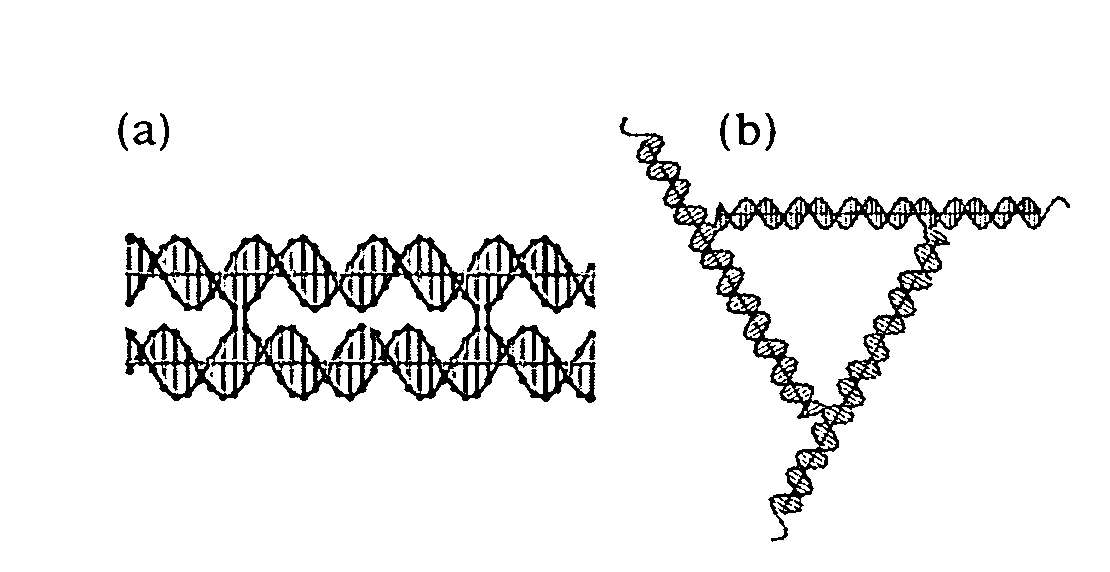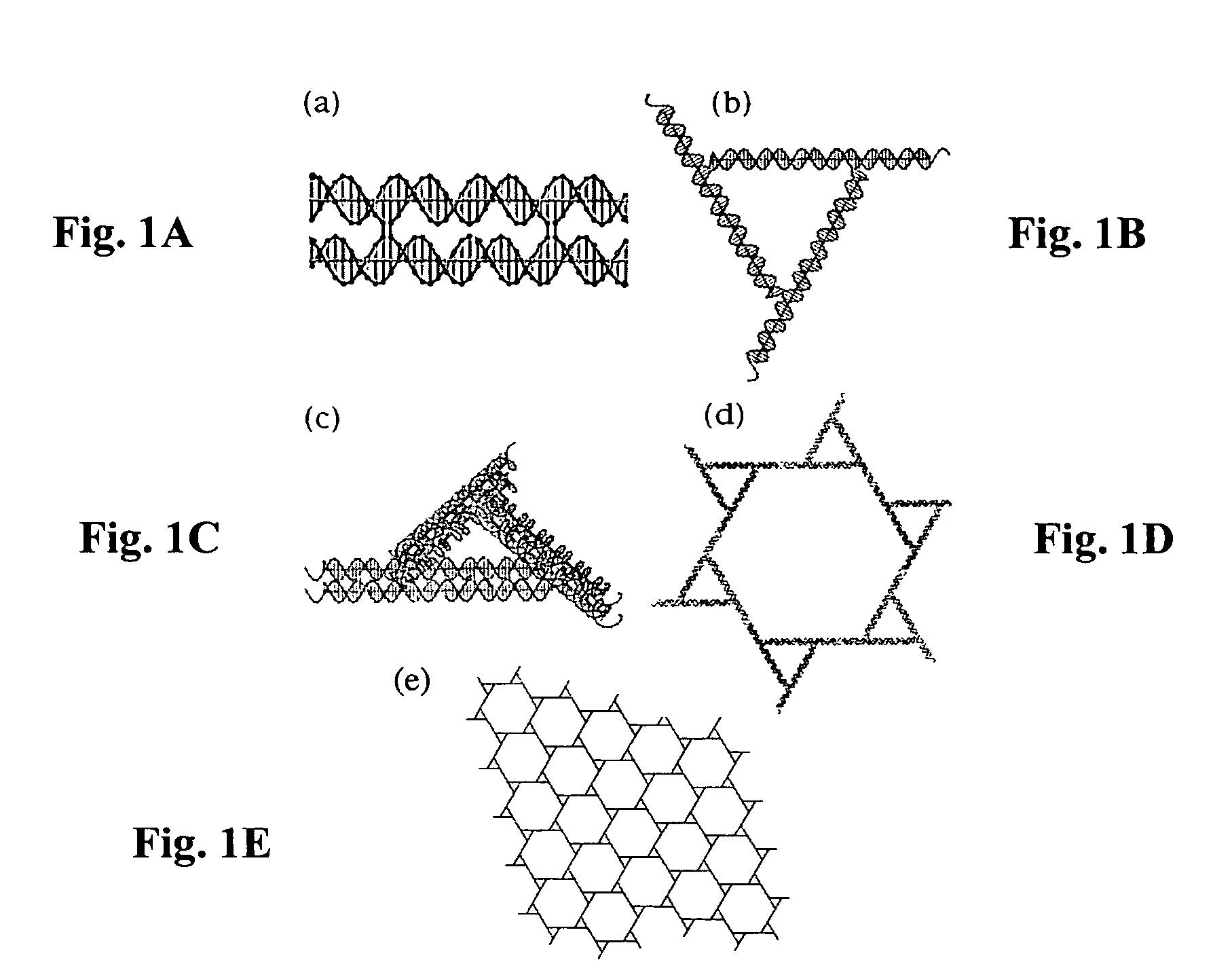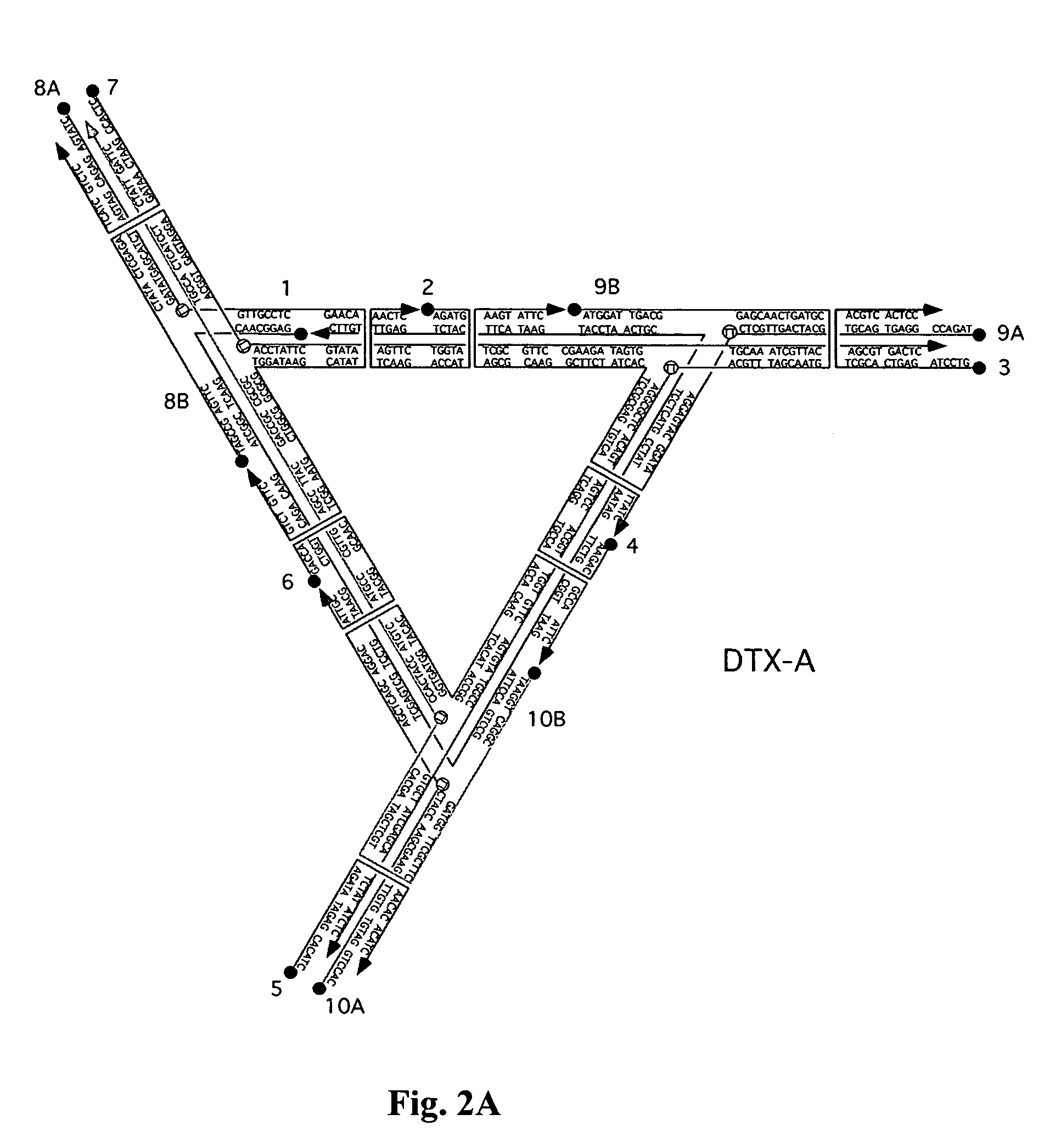Polygonal nanostructures of polynucleic acid multi-crossover molecules and assembly of lattices based on double crossover cohesion
a polynucleic acid and cross-over technology, applied in the field of polynucleic acid nanostructures and lattices, can solve the problems of single nucleic acid helices in the et al. to form a hexagonal lattice, the triangular unit used, and the failure of previous attempts to produce trigonal or hexagonal arrays
- Summary
- Abstract
- Description
- Claims
- Application Information
AI Technical Summary
Benefits of technology
Problems solved by technology
Method used
Image
Examples
example 1
Trigonal 2D DNA Crystals Based on Double Crossover Cohesion
[0058]Two-dimensional pseudo-hexagonal trigonal arrays have been constructed by self-assembly from DNA. The motif used is a bulged-junction DNA triangle whose edges and extensions are DNA double crossover (DX) molecules, rather than conventional DNA double helices. The experiments described below in this example were performed to establish whether the success of this system results from the added stiffness of DX molecules or the presence of two sticky ends at the terminus of each edge. Removal of one sticky end precludes lattice formation, suggesting that it is the double sticky end that is the primary factor enabling lattice formation.
Materials and Methods
[0059]The strands were synthesized by conventional phosphoramidite procedures (Caruthers, 1985), and were purified by denaturing polyacrylamide gel electrophoresis. Stoichiometric mixtures of the strands (estimated by OD260) for each triangle were prepared separately to a ...
example 2
New Systems from DX Molecules
[0066]The first three of these new systems are 3-space spanning motifs. If one combines them along the three vectors defined by their complementary sticky end pair directions (all are connecting DX units in essence), a 3D solid will result. All three motifs behave well on non-denaturing gels, migrating as a single band.
3D DX Triangle
[0067]A DX triangle, different from the DX triangle of FIG. 1C and FIGS. 2A-2B, is illustrated in FIG. 4. A schematic illustration of a 3D DX triangle with double cohesive ends at the free ends (extensions) of its edges is presented in FIG. 5. A good screen for the geometrical viability of a 3D system is to eliminate one pair of cohesive ends from that system and then to see if it forms a good 2D array, as assayed by the AFM. If all three 2D sections of the system are good, it is an indication that geometrical design problems have been solved. The present inventors have been markedly successful in this regard for the 3D DX tr...
PUM
| Property | Measurement | Unit |
|---|---|---|
| melting temperature | aaaaa | aaaaa |
| pH | aaaaa | aaaaa |
| pH | aaaaa | aaaaa |
Abstract
Description
Claims
Application Information
 Login to View More
Login to View More - R&D
- Intellectual Property
- Life Sciences
- Materials
- Tech Scout
- Unparalleled Data Quality
- Higher Quality Content
- 60% Fewer Hallucinations
Browse by: Latest US Patents, China's latest patents, Technical Efficacy Thesaurus, Application Domain, Technology Topic, Popular Technical Reports.
© 2025 PatSnap. All rights reserved.Legal|Privacy policy|Modern Slavery Act Transparency Statement|Sitemap|About US| Contact US: help@patsnap.com



